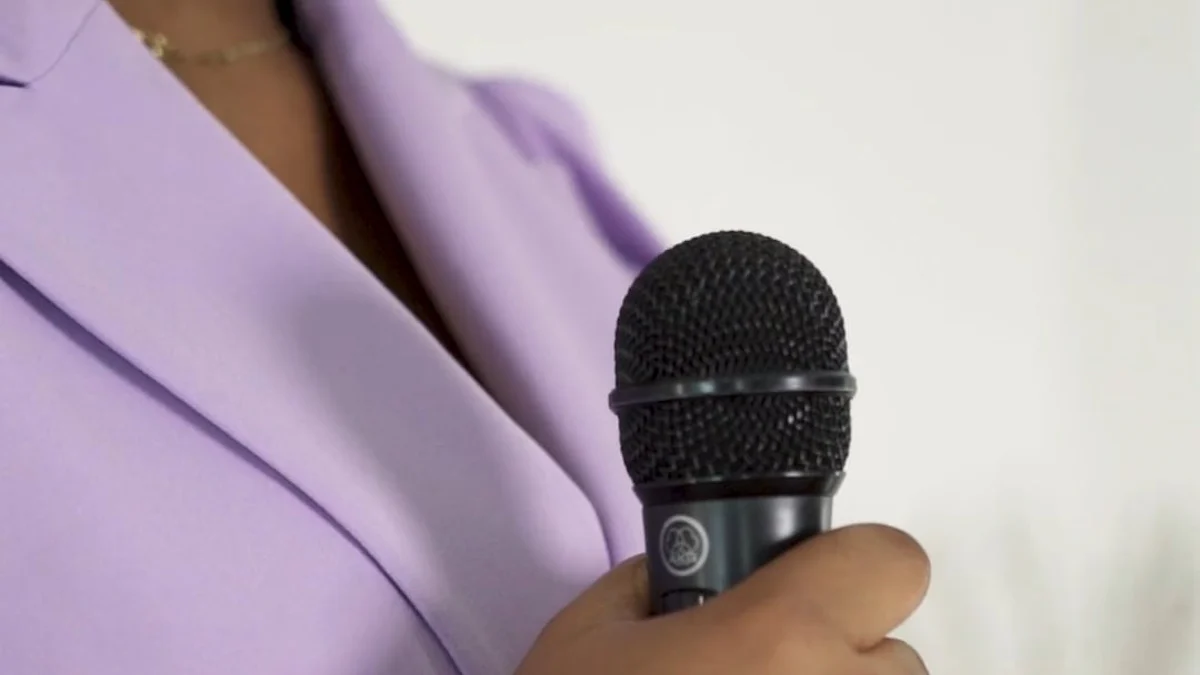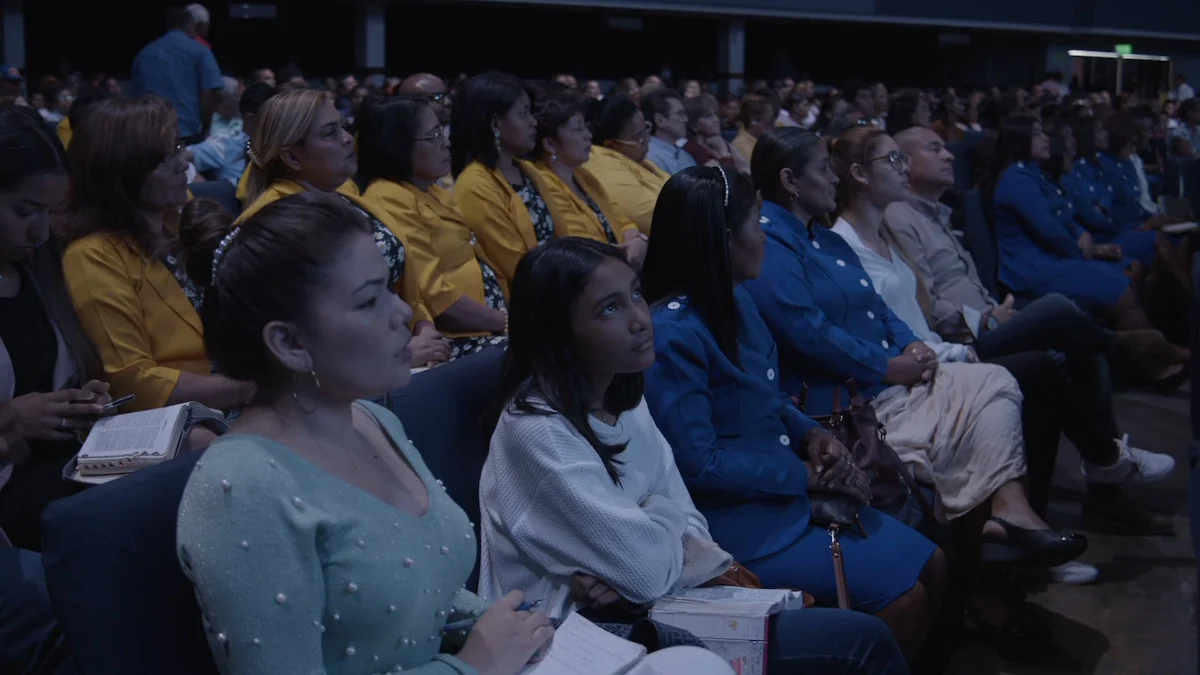How to Keep Your Audience Engaged During a Presentation

Have you ever felt your audience drifting away during a presentation? Keeping their attention isn’t just about speaking well—it’s about creating a connection. When you engage your audience effectively, you’ll notice increased participation, clearer communication of your goals, and even real-time feedback through tools like live polls or Q&A sessions. This makes your presentation more interactive and impactful. On the flip side, ignoring engagement can lead to rushed content, audience fatigue, or a complete disconnect. If you’ve ever wondered how to engage a large audience or deliver a captivating presentation, you’re in the right place. Let’s explore how engaging presentations can transform your delivery and leave a lasting impression.
Start Strong to Keep Your Audience Focused
Starting your presentation with energy and purpose sets the tone for everything that follows. If you want to keep your audience focused, you need to grab their attention right from the beginning. A strong opening not only piques curiosity but also signals that your presentation will be worth their time.
Open with a Hook
A compelling hook is your secret weapon to engage your audience from the start. Think of it as the spark that lights the fire of interest. Here are some ideas to inspire your opening:
- Reference a historical event to connect the past with your topic.
- Use the word "imagine" to paint a vivid picture in their minds.
- Add a touch of pop culture to make your presentation relatable.
- Surprise them with an unexpected fact or statistic.
- Share a unique quote or twist a common saying for a fresh perspective.
- Introduce a foreign proverb to offer a new way of thinking.
- Walk them through a "what if" scenario to spark curiosity.
- Tell a short, compelling story that ties into your main theme.
For example, if you're presenting on innovation, you might say, "Imagine a world where electricity was never discovered. How different would our lives be today?" This type of opening immediately draws your audience in and makes them eager to hear more.
Set Clear Expectations
Once you've captured their attention, it's time to set the stage. Clear signposting helps your audience understand what to expect and keeps them engaged throughout.
Start by stating your presentation's goal or thesis upfront. For instance, you could say, "Today, I'll show you how to engage a large audience effectively, even if public speaking isn't your strength." This gives your audience a clear idea of what they'll gain by listening.
Next, provide a brief preview of your main points. Think of this as a roadmap that guides them through your presentation. For example, "We'll cover three key strategies: starting strong, using storytelling, and fostering interaction." This type of signposting ensures your audience knows where you're headed and helps them stay focused.
By combining a compelling hook with clear expectations, you create a strong foundation for a presentation that keeps your audience focused and engaged.
Use Storytelling to Engage Your Audience

Stories have a unique way of drawing people in. They’re not just entertaining—they’re powerful tools for creating a connection with your audience. When you use storytelling in your presentation, you make your message more memorable and relatable. Let’s explore how you can use personal stories and case studies to keep your audience engaged.
Share Personal Stories
Personal stories are like bridges—they connect your experiences to your audience’s emotions. Sharing a personal experience relevant to your topic can make your presentation feel more authentic and engaging. For example, an entrepreneur might share how they nearly went bankrupt but turned things around with resilience and creativity. This kind of story not only captivates attention but also inspires your audience.
When you tell your story, focus on the lessons you learned. Did you overcome a challenge? Did you discover a new perspective? Highlighting these takeaways helps your audience see the value in your journey. For instance, an HR professional might recount a personal struggle with burnout and how it led to implementing wellness policies at work. This approach fosters empathy and motivates your audience to take action.
Tip: Humans are naturally drawn to stories. They stimulate imagination, foster emotional bonds, and encourage active participation. Use this to your advantage!
Incorporate Case Studies or Examples
Case studies and real-world examples bring your presentation to life. They illustrate your points in a way that feels tangible and relatable. To make them effective, tailor your examples to your audience’s interests and knowledge level. Avoid jargon and focus on clear, concise storytelling.
For instance, if you’re discussing innovation, you could share a case study about a company that used creative problem-solving to overcome a major obstacle. Describe the challenge, the solution, and the results. This structure keeps your audience engaged and helps them understand the impact of your ideas.
Visual storytelling can also enhance your case studies. Use charts, images, or videos to complement your narrative. These elements make your presentation more dynamic and easier to follow. Remember, the goal is to create a connection between your audience and the story you’re telling.
Note: Relatable stories resonate more with diverse audiences. Adapt your language, visuals, and content depth to match their needs. This ensures everyone feels included and engaged.
By weaving personal stories and case studies into your presentation, you transform dry facts into compelling narratives. Your audience won’t just listen—they’ll feel, relate, and remember.
Foster Interaction with Audience Engagement Strategies
Keeping your audience engaged isn’t just about delivering information—it’s about creating a two-way conversation. When you foster audience interaction, you turn passive listeners into active participants. Let’s explore some practical ways to make your presentation more dynamic and engaging.
Ask Questions Throughout
Questions are a simple yet powerful way to engage your audience. Open-ended questions, in particular, encourage participation and spark meaningful discussions. They invite your audience to think critically and share their perspectives, making them feel valued and involved.
Here are some examples of open-ended questions you can use:
- What steps could improve our current process?
- How does this solution align with your goals?
- What challenges have you faced in similar situations?
- If you could change one thing about this approach, what would it be?
These questions not only stimulate thinking but also create opportunities for dynamic interaction. Encourage your audience to share their thoughts, either by speaking up or using tools like live Q&A platforms. This keeps the energy flowing and ensures everyone feels included.
Tip: Pause after asking a question to give your audience time to reflect. Silence can be a powerful tool to prompt responses.
Incorporate Activities
Interactive elements like activities can transform your presentation into an engaging experience. Quick polls or quizzes are excellent for grabbing attention and gauging your audience’s opinions in real time. Tools like Mentimeter or Slido make this process seamless and fun.
Group activities are another great option. Small group discussions or brainstorming sessions allow participants to share ideas and collaborate. For example, you could ask them to solve a problem related to your topic or discuss how they’d apply your ideas in their own context. These activities not only foster audience interaction but also encourage active participation.
Here’s a quick look at some effective activities:
- Live Polls and Q&A: Use technology to gather instant feedback.
- Brainstorming Sessions: Encourage creativity and collaboration.
- Icebreaker Exercises: Help participants feel comfortable and connected.
- Group Discussions: Facilitate networking and deeper engagement.
By incorporating these active engagement techniques, you’ll create a presentation that’s not just informative but also memorable. Your audience will leave feeling inspired and involved.
Break Up Monotony to Keep Your Audience Focused

Even the most exciting topics can lose their spark if the delivery feels repetitive. To keep your audience’s attention, you need to mix things up and avoid common pitfalls like overloading slides or delaying interaction. Let’s explore how you can break up monotony and keep your presentation dynamic.
Vary Your Delivery Style
Switching up your delivery style keeps your audience on their toes. Alternate between speaking, asking questions, and storytelling to create a rhythm that feels fresh and engaging. For instance, after explaining a concept, pause to ask a thought-provoking question or share a quick story that ties into your point. This approach keeps your audience actively involved rather than passively listening.
Humor and anecdotes are also powerful tools. A well-placed joke or a relatable story can lighten the mood and make your message more memorable. Humor doesn’t just entertain—it builds a connection with your audience. For example, if you’re discussing a challenging topic, a lighthearted anecdote about a personal misstep can make you more relatable. Just remember to keep it appropriate and relevant to your audience.
Tip: Changing your tone, pace, and energy levels throughout your presentation can help you avoid monotony and keep your audience engaged.
Include Pauses and Transitions
Pauses are your secret weapon for maintaining focus. They give your audience time to process information and reflect on what you’ve said. After delivering a key point, take a moment to pause. This brief silence not only emphasizes your message but also gives your audience a chance to catch up.
Transitions are equally important. They signal shifts in topics and help your presentation flow smoothly. Use phrases like “Now that we’ve covered this, let’s move on to…” or “Here’s how this connects to our next point.” These cues guide your audience and prevent confusion. Pairing transitions with visually engaging slides can make your presentation even more seamless and captivating.
Note: Avoid overloading your slides with text. Instead, use visuals like images, infographics, or videos to break up long stretches of information. Visually engaging slides not only support your message but also keep your audience’s attention.
By varying your delivery style and incorporating pauses and transitions, you’ll create a presentation that feels dynamic and engaging. Your audience will stay focused and leave with a clear understanding of your message.
End with Impact to Engage Your Audience
Summarize Key Takeaways
Wrapping up your presentation with a clear summary helps your audience retain the most important points. It’s like tying a bow on a gift—it leaves everything neat and memorable. Start by briefly recapping the main points you covered. For example, if your presentation focused on how to engage a large audience, remind them of the strategies: starting strong, using storytelling, fostering interaction, and breaking up monotony.
Next, highlight actionable steps your audience can take. This gives them a sense of direction and purpose. For instance, you might say, “Try incorporating a personal story in your next presentation or use a live poll to boost audience engagement.” These steps make your message practical and easy to apply.
Summarizing your key takeaways not only reinforces your message but also ensures your audience leaves with a clear understanding of what they’ve learned. It’s a simple yet powerful way to make your presentation memorable.
Close with a Call-to-Action
A strong call-to-action (CTA) is the perfect way to end your presentation on a high note. It motivates your audience to take the next step and keeps the momentum going. Encourage them to apply what they’ve learned. For example, you could say, “Start planning your next presentation using these strategies and see the difference in audience engagement.”
You can also provide resources to help them dive deeper. Share links to articles, invite them to join a webinar, or suggest tools like live polls or Q&A platforms. These resources make it easier for your audience to stay connected and continue learning.
Want to leave a lasting impression? End with something memorable, like a thought-provoking question or a powerful quote. For instance, “What will you do differently in your next presentation to create a stronger connection with your audience?” This kind of closing not only inspires action but also keeps your message fresh in their minds.
By summarizing your key points and ending with a compelling CTA, you’ll deliver a successful presentation that resonates long after it’s over.
Engaging your audience is more than just a presentation skill—it’s a way to create a lasting connection. When you focus on audience engagement, you leave impressions that resonate long after your talk ends. You also establish credibility and foster ongoing interactions, which can position you as a thought leader in your field.
We’ve explored how to engage a large audience effectively. From starting strong with a hook to using storytelling, fostering interaction, and breaking up monotony, these strategies ensure your message sticks. Even leaders like Satya Nadella have transformed their presentations by prioritizing open communication and active listening, proving the power of engagement.
Now it’s your turn. Apply these tips in your next presentation. Whether it’s asking questions, sharing stories, or using live polls, every step brings you closer to a more impactful delivery. Remember, the key to success lies in creating a meaningful connection with your audience.
FAQ
How can I handle a disengaged audience during my presentation?
If your audience seems disengaged, switch things up. Ask a question, share a quick story, or use humor to re-capture their attention. You can also pause and check in with them by asking, “Does this make sense so far?” Small adjustments can make a big difference.
What should I do if I forget what to say during my presentation?
Take a deep breath and pause. Use your slides or notes as a guide to get back on track. If needed, ask the audience a question to buy time while you gather your thoughts. Staying calm helps you recover smoothly.
How do I make my presentation more interactive for virtual audiences?
Use tools like polls, quizzes, or breakout rooms to engage virtual participants. Encourage them to use the chat feature for questions or comments. Keep your energy high and use visuals to maintain interest. Virtual presentations thrive on interaction and clear communication.
What’s the best way to practice for a presentation?
Rehearse out loud multiple times. Record yourself to identify areas for improvement. Practice in front of a friend or colleague for feedback. Focus on timing, tone, and delivery. The more you practice, the more confident you’ll feel when it’s showtime.
How can I make my slides more engaging?
Keep slides simple and visually appealing. Use high-quality images, minimal text, and clear fonts. Avoid clutter. Include charts or infographics to explain complex ideas. Remember, slides should support your message, not distract from it.
See Also
Engaging Your Audience: 20 Exciting Activities for 2025
10 Essential Strategies to Enhance Engagement at 2025 Events
Effective Ways to Captivate a Large Audience in 2025
